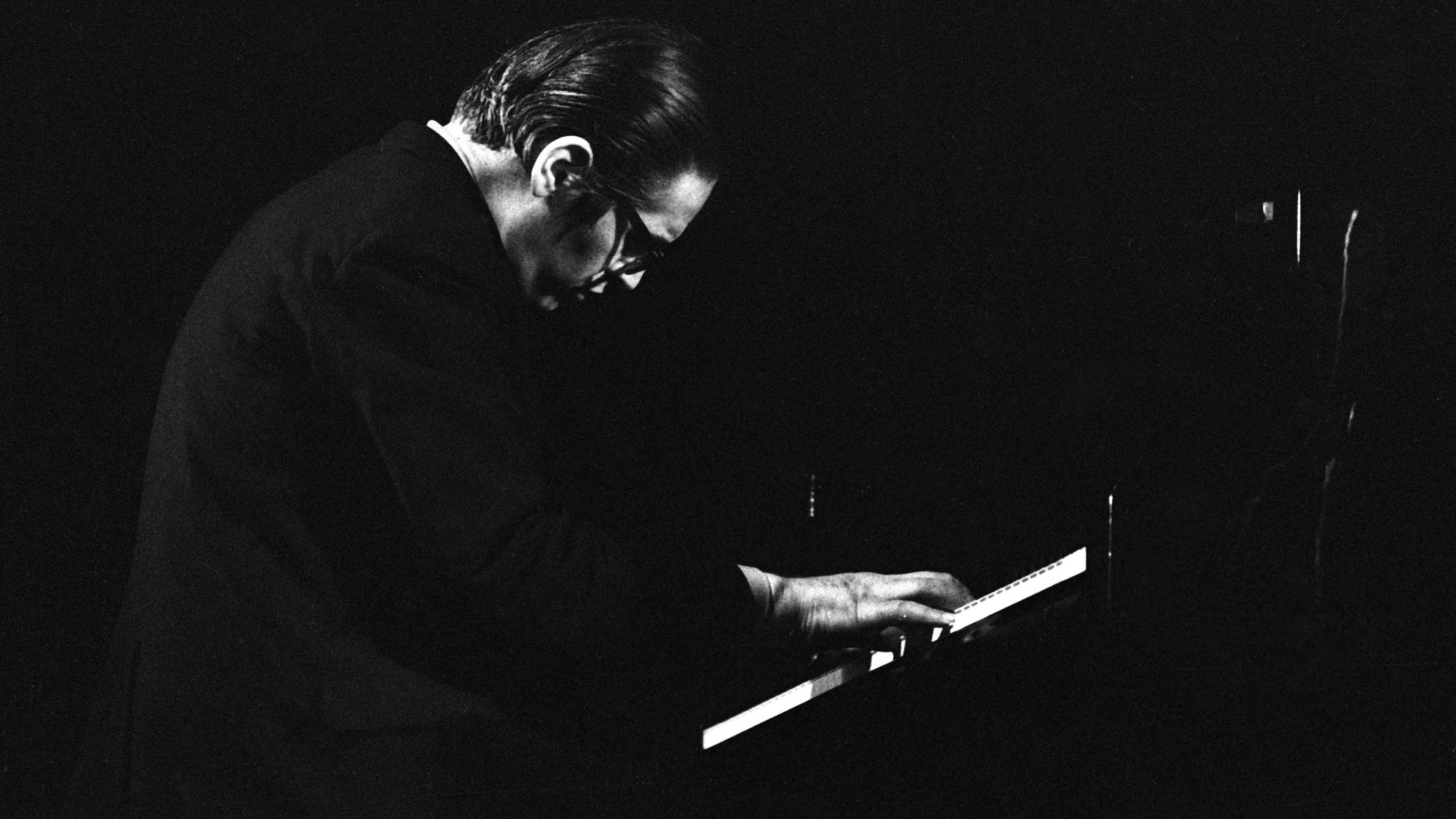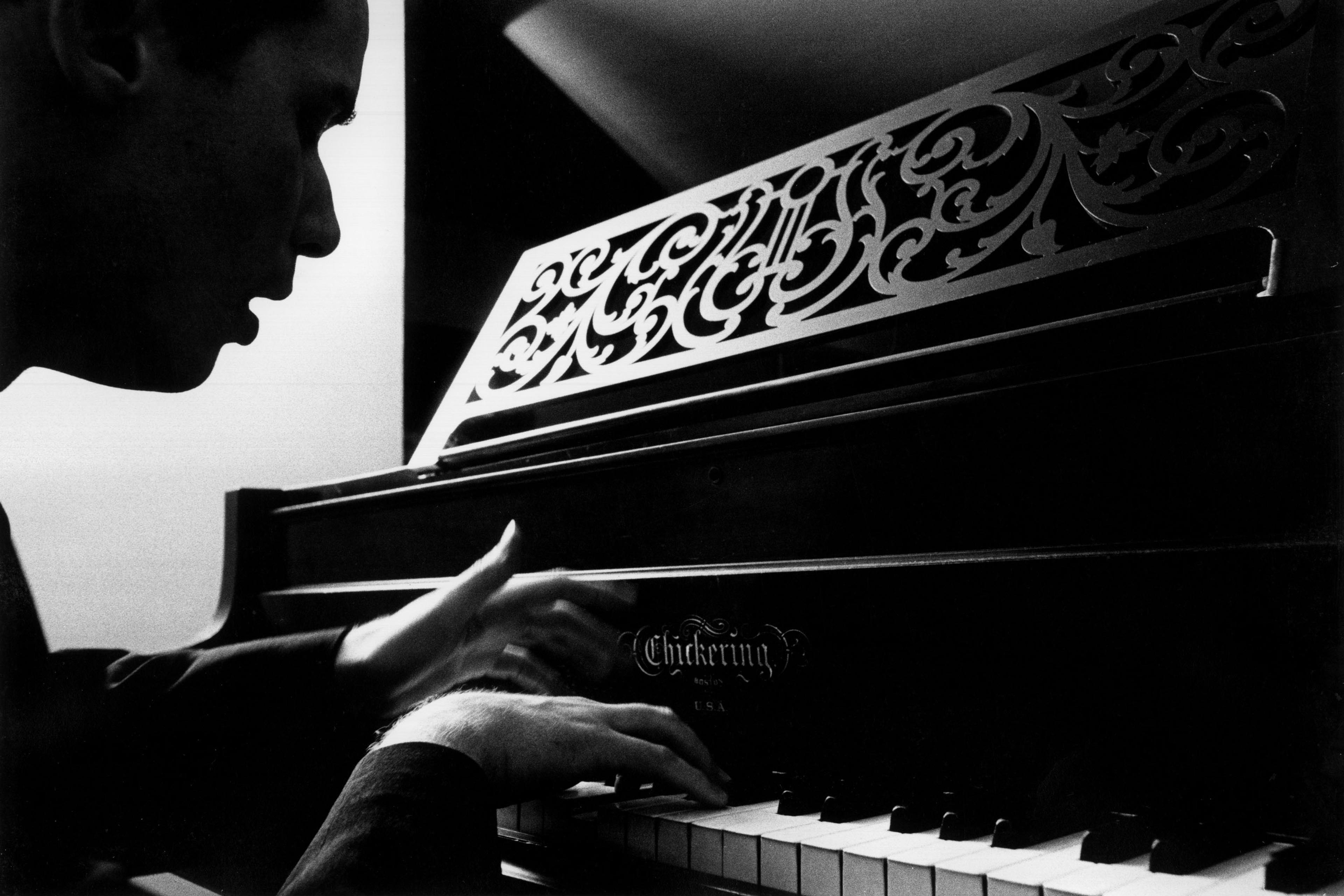It’s the ‘yeah, yeah, yeah’ in the Beatles’ ‘She Loves You’, the guitar riff in Blur’s ‘Song 2’, or the ascending vocal in ‘Kill Bill’ where SZA sings: ‘I might kill my ex.’ For many listeners, each of these serves as a hook: a musical or lyrical moment that both stands out and is easily remembered. This definition, based on one put forth in the 1980s, is a useful way to think about what hooks can be. Pop music is full of hooks, but there are plenty of them in other kinds of music, too – whether it’s the motif at the start of Beethoven’s 5th Symphony (da-da-da DAH), or Bill Evans’s descending piano chords at the beginning of Miles Davis’s version of ‘On Green Dolphin Street’. A hook can come in many forms, from a particular beat or series of notes to the lyrics or other elements at a certain point in a piece of music – any feature, or combination of features, that stands out and sticks in a person’s memory.
A hook is supposed to be heard and noticed easily. For example, the intended hook in ‘Who Let the Dogs Out’ is obvious: it’s the bit where Baha Men chant: ‘Who let the dogs out? Who, who, who, who?’ Whether you like the song or not, there is something in this part of it – its rhythm, its simplicity, the sound of the voices, or perhaps its repetitiveness – that seems to transcend personal taste. It is easily remembered to the extent that it can enter into your consciousness and stay there, whether you like it or not (making it what psychologists call an ‘earworm’).
Much of modern pop could be described as a hook-delivery device: ‘Bad Romance’ by Lady Gaga or ‘Shake It Off’ by Taylor Swift, for example, are packed full of musical moments that stand out to the listener and are easily remembered. Jay Brown, the CEO of the Roc Nation entertainment company, once suggested that modern pop songs need a hook in every section to hold a listener’s attention. Producers certainly seem to know this. From the ‘rah rah’ and ‘ooh la la’ vocables in ‘Bad Romance’ to the part in ‘Shake It Off’ when the saxophone line kicks in, the plan appears to be, essentially: if one hook doesn’t get you, another will.
So what makes a part of a song a hook? Well, a hook is not just a musical moment; it is a musical moment that is interacting with the listener’s mind. In particular, it is a product of the interaction between the music and the listener’s capacities for attention and memory.
Human attentional capacity is quite limited, so our perception of the world is filtered to focus us on certain information. As the psychologist Albert Bregman has explained, the human mind handles the complex information in an ‘auditory scene’ – such as a recording of a piece of music – in ways that are sometimes similar to Gestalt principles. For example, just as we differentiate between figures (eg, a person, a row of cars, a tree) and a background in visual scenes, we seem to assume that there will be a distinction between figure and background in music, and interpret what we hear in that light. Most of the time when we listen to pop music, we interpret the vocal in a song as a figure, and the backing track (often, the chords, bassline and beats) as background, though, in some cases, we might interpret another layer in the music as the figure – such as a prominent bassline. Most of the time, a hook will involve a figure, rather than the background.
Like our capacity for attention, our memory also has its limits, as anybody who has forgotten a word mid-sentence can tell you. The brain needs to encode, store and retrieve information – whether that information is what you did last Wednesday or the hook in ‘Who Let the Dogs Out’. If some piece of information in your memory stands out more easily than others, it is because it was more easily encoded into some neural format to be stored, and/or more easily retrieved when needed.
Some things tend to be easier to encode, store and retrieve. For example, the psychologist George Miller in 1956 suggested that there was a ‘Magical Number Seven, Plus or Minus Two’ – that is, we can hold about seven items in short-term memory at once. Weird Al Yankovic once wrote a parody of George Harrison’s ‘Got My Mind Set On You’ called ‘(This Song’s Just) Six Words Long’ – and he was parodying the song in the first place because it was memorable. It is probably not coincidental that the main part of ‘Who Let the Dogs Out’ that people remember features only five words. When a musical moment is digestible by short-term memory – whether due to its lyrics, a concise guitar riff, or some other part of the music – that likely means it is more easily stored in long-term memory. Brevity isn’t the only reason why a musical moment is likely to be remembered, but it certainly doesn’t hurt.
So, some common features seem to make any given fragment of music better able to function as a hook. And yet it’s clear that a musical moment that serves as a hook for one person might leave another person entirely unaffected – it doesn’t stand out to them, it doesn’t linger in their memory. To them, it’s not a hook. For co-author Jadey O’Regan, one part of a song that strongly stands out for her is a cello countermelody in the second verse of ‘Our Sweet Love’, from the Beach Boys’ Sunflower (1970) – an album that didn’t set the charts on fire. Most music fans will have these special moments in the music they love, even if those moments aren’t hooks to many other listeners. So why is this? What is it about a hook that can make it so personal?
Humans don’t come out of the womb with a fully formed sense for music. Instead, we develop unconscious expectations about the music we listen to based on sheer experience over the course of many years. When Western listeners hear a C major chord and then an F major chord, for instance, it is not terribly surprising if a G major chord follows, as that sequence is so common in Western music. This is not just the case for chords, but also for melodies, rhythms, timbres and all aspects of music. These expectations about what usually happens in music influence the way that music makes a listener feel. Unsurprisingly, they also influence what a listener pays attention to in the music and remembers about it. If you are surprised by a musical moment, that surprise has grabbed your attention.
Musical expectations are one sort of difference between listeners that might affect why a musical moment is a hook for some people and not for others. A hip-hop fan’s expectations might be different to a rock fan’s expectations, for example. A second difference is that our capacities for memory differ: some people might be able to encode more musical information into a bite-size, memorable chunk, and so some hooks might work for them and not for others.
The extent to which musical elements stand out will also differ depending on listeners’ preferences. Perhaps Jane focuses more on rhythm – her parents were into funk when she was growing up, and these days she likes to dance – and so a big beat-centred hook is especially likely to catch her attention, while she’s less moved by a hook that is heavily based on the pitches of a melody. Eli, meanwhile, might tend to focus more on the lyrics or other features in a piece of music, and the hook that catches Jane’s attention slips by unnoticed for him.
These differing musical inclinations are likely why many of the biggest pop songs seem to have what we call ‘compound hooks’ – hooks where there is something equally attention-grabbing about, say, the vocal performance, the melody and the rhythm. Take the way that Billie Eilish sings the title phrase in her song ‘Bad Guy’ (The line that goes, ‘I’m the bad guy,’ starting around 0:55).
There are multiple features that help make this part a hook:
- The music stops, and she sings the melody unaccompanied – the change in arrangement grabs our attention.
- Much of the song’s previous melody is fairly staccato and syncopated, but this phrase is sung much more languidly, with a long-held note, which also makes it stand out.
- The title phrase is the only part of the song where the vocal melody resolves to the song’s tonic – that is, the melody ends on what is statistically the most common note for music in that key. This releases the tension of the previous section and helps make the phrase memorable.
- The sneer in her voice as she sings the line stands out in contrast to the more flatly delivered lyrics that precede it. There’s also the ‘Darth Vader’ effect placed on her voice, which semiotically drums in the message of the lyric by evoking a filmic bad guy.
- Then there’s the lyric itself, which is memorable for a variety of reasons, such as its economy in evoking a feeling.
Most likely, a musical moment containing just one of these elements would pass most listeners by. But combine them all, giving a variety of listeners something to latch on to, and you have the title hook of one of the most commercially successful songs of 2019.
That said, plenty of readers have probably heard that ‘Bad Guy’ hook a few times on the radio and never paid much attention to it. Instead, it was other hooks in other songs that got to them. Psychological research suggests that the range of songs stuck in different peoples’ heads at any one time is quite vast. Each music fan has their own rotating mental playlist of songs that float their particular boat. And vive la différence!
Creating a piece of music that stands out and is easily remembered – at least by enough people to make it worth the effort – is often hard work. The eminent songwriter Randy Newman once said that he felt that there was just as much ‘blood on the floor’ when a professional songwriter writes a song aimed at getting some hooks to the top of the charts as when they write a more serious, ‘artistic’ song. Ultimately, hooks show us that, in many ways, the seeming simplicity of pop music is deceptive. If you experience the joy of a good hook, it’s because these musical moments are often very carefully crafted in an attempt to grab hold of our precious attention and memory.








